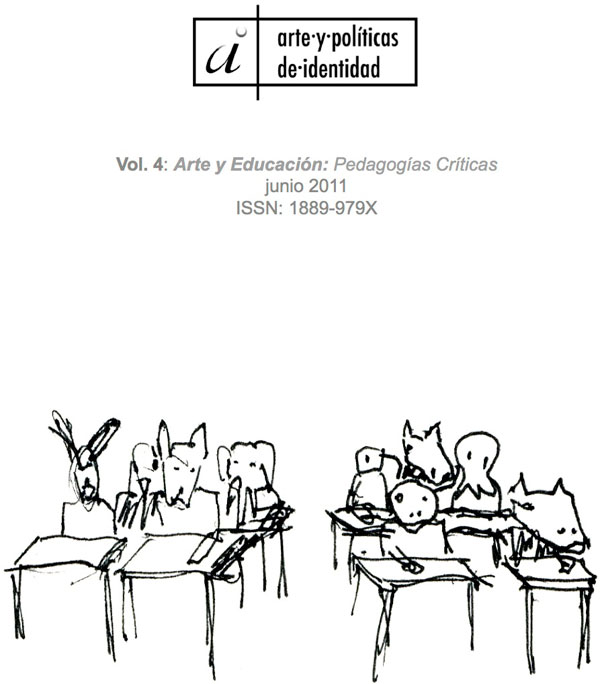Politics, Identity and a Career in Arts and Health
Abstract
The routes by which artists arrive at and pursue careers in arts and health, as indeed in any field, will each be unique and will each uniquely influence an artist’s practice and the impact of that practice upon audience and participants; and yet this critical topic has not been substantially addressed in the growing literature on the arts and health field. An autoethnographic approach enables the author to trace and relate his personal identity and actions to some of the significant political events of the times immediately preceding and following his conception, before analysing how these events led to an interplay of identity and politics that has moulded his own practice and career in arts and health. To artists working in the social domain such an autobiographical approach offers a model for a wider and deeper reflective practice, whilst opening - to audience, participants and commissioners alike - routes to deeper understanding of the artistic experience and processes with their uniquely shaped and shaping contexts, and to the consideration of a range of tailored support, mentoring and intervention mechanisms that will sustain and enrich the consequent value of these artistic experiences and processes as catalysts for cultural engagement and development.Downloads
-
Abstract199
-
PDF (Español (España))166
References
Bettelheim, B. (1970 edition). The Informed Heart: The Human Condition in Mass Society. London: Paladin.
Bierce, A. (Ed. Hopkins, E.J., 1971). The Enlarged Devil’s Dictionary. Harmondsworth: Penguin.
Bochner, A. and Ellis C. (2006). Communication as Autoethnography. In G. Sheperd, J. St.John and T. Striphas (Eds.), Communication as... Perspectives on Theory... (pp. 110-122). Thousand Oakes, CA.: Sage.
Breton, A. (1999). Nadja. English translation by Richard Howard. London: Penguin Books.
Brown, J. (1942-45). Wartime writings. In the possession of the author of this essay.
Brown, L. (1996). START: The Arts and Mental Health. In C. Kaye and T. Blee (Eds.), The Arts in Health Care: A Palette of Possibilities. London: Jessica Kingsley.
--------(1998) National Report of Great Britain. In H. Tautz (Ed.), The Seed is Sown: 10 Years of “Arts in Hospital”. Paris: UNESCO.
--------(2006). Is Art Therapy? Art for mental health at the millennium. PhD thesis. Manchester Metropolitan University.
Chang, H. (2008). Autoethnography as Method. Walnut Creek. CA.: Left Coast Press.
Creed, F. (1984). Sheltered Training in Art (draft proposal). Manchester Metropolitan University: Arts for Health Archive.
DeVault, M. (1997). Personal Writing in Social Research. In R. Hertz (Ed.), Reflexivity and Voice. London: Sage.
Dissanayake, E. (1995). Homo Aestheticus. Seattle: University of Washington Press.
Ellis, C. and Bochner, A. (2000). Autoethnography, Personal Narrative, Reflexivity: Researcher as Subject. In N. Denzin and Y. Lincoln (Eds.), The Handbook of Qualitative Research (2nd edition). Thousand Oaks, Ca.: Sage.
Gombrich, E.H. (1995). The Story of Art. London: Phaidon.
Graham, K. (1908). The Wind in the Willows. London: Methuen.
HMSO. (1939). Germany No. 2 (1939). Papers Concerning the Treatment of German Nationals in Germany, 1938-1939. London: His Majesty’s Stationary Office.
Hyatt, J. and Brown, R. (2004). Bridgehead Evaluation. Manchester Metropolitan University.
Jean, M. (1960). The History of Surrealist Painting. London: Weidenfeld and Nicholson.
McNiff, S. (1998). Art Based Research. London: Jessica Kingsley.
Marx, K. (1971). A Contribution to the Critique of Political Economy. London, Lawrence and Wishart.
Newby, E. (1971). Love and War in the Apennines. London: Hodder & Stoughton.
Novick, R. (1999). The Holocaust in American Life. Boston: Mariner.
Renton, D. (2001). This Rough Game: Fascism and Anti-Fascism. Stroud: Sutton.
Rothman, B. (1982). 1932 Kinder Trespass: Personal View of the Kinder Scout Mass Trespass.
Smith, R. (Ed.). (2002). Kinder Scout: Portrait of a Mountain. Matlock: Derbyshire County Council.
Sutton, J. and Brown, L. (1987). Head for the Hills. Unpublished Project report. Manchester Metropolitan University: Arts for Health Archive.
Verrent, J, and Roberts, N. (Eds.). (1997). Arts in Mental Health at Stanford Hall, October 1996. A Report from the First Arts in Mental Health Forum.Nottingham: East Midlands Shape
Verrent, J. (1999). I amLive Report. Bradford: mind the...gap
Wilber, K. (2002). Boomeritis: A Novel That Will Set You Free. Boston: Shambhalla Publications.
Works published in this journal are subject to the following terms:
- The Service of Publications from the University of Murcia (publishing house) keeps the published works’ copyrights, and favors and allows the reuse of these works under the license indicated in point 2.
- Works are published in the journal’s online edition under the license Creative Commons Reconocimiento-NoComercial-SinObraDerivada 3.0 España(texto legal). They can be copied, used, disseminated, transmitted and publicly exhibited, as long as: i) the author and original source of publication are cited (journal, publishing house and work’s URL); ii) they are not used for commercial purposes; iii) the existence and specifications of this license are mentioned.
3. Conditions for auto-file. It is allowed and encouraged that authors share electronically their pre-print version (the pre-reviewed version) and /or post-print version (the reviewed and accepted version) of their Works before the publication, since it promotes its circulation and dissemination. RoMEO color: green.










